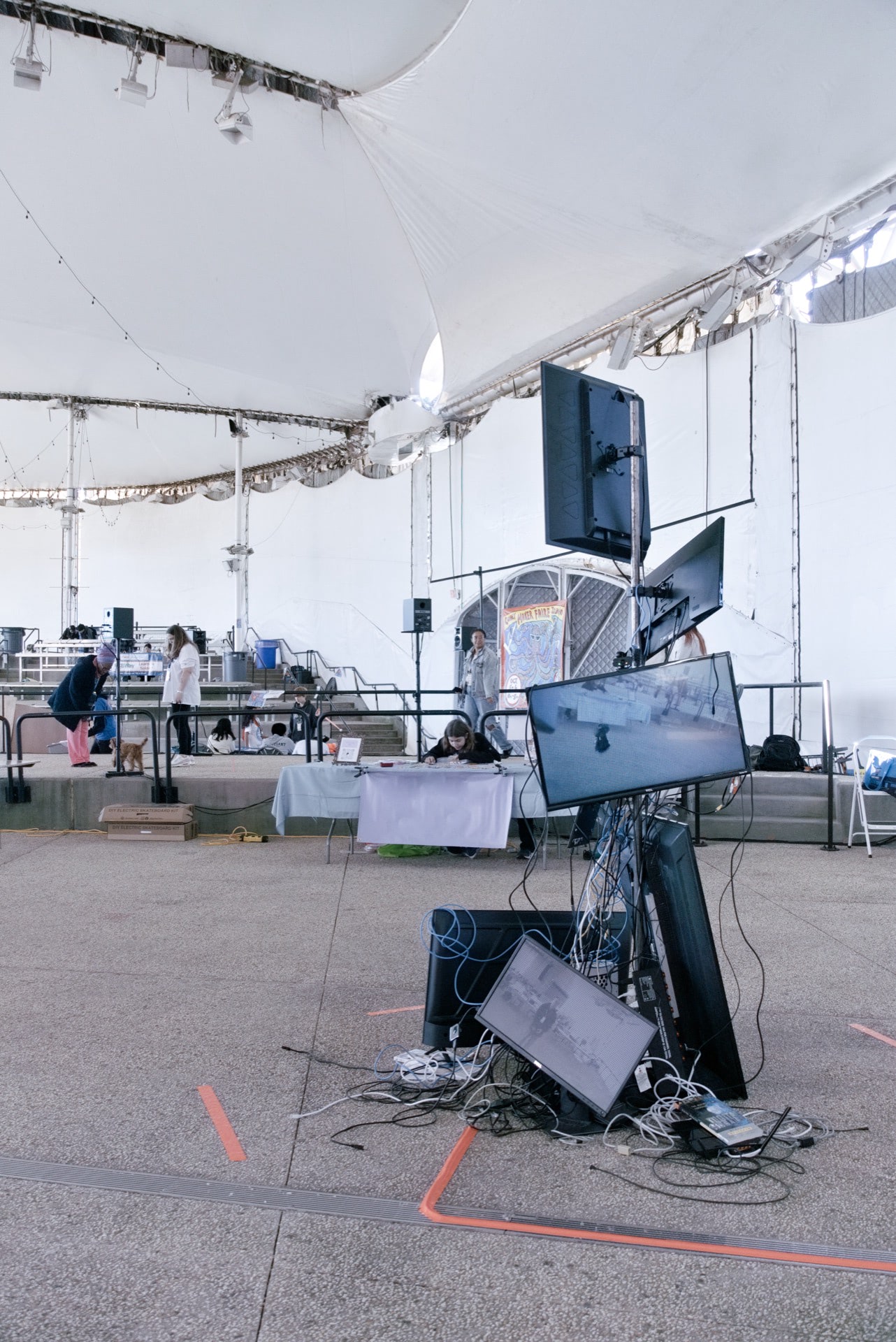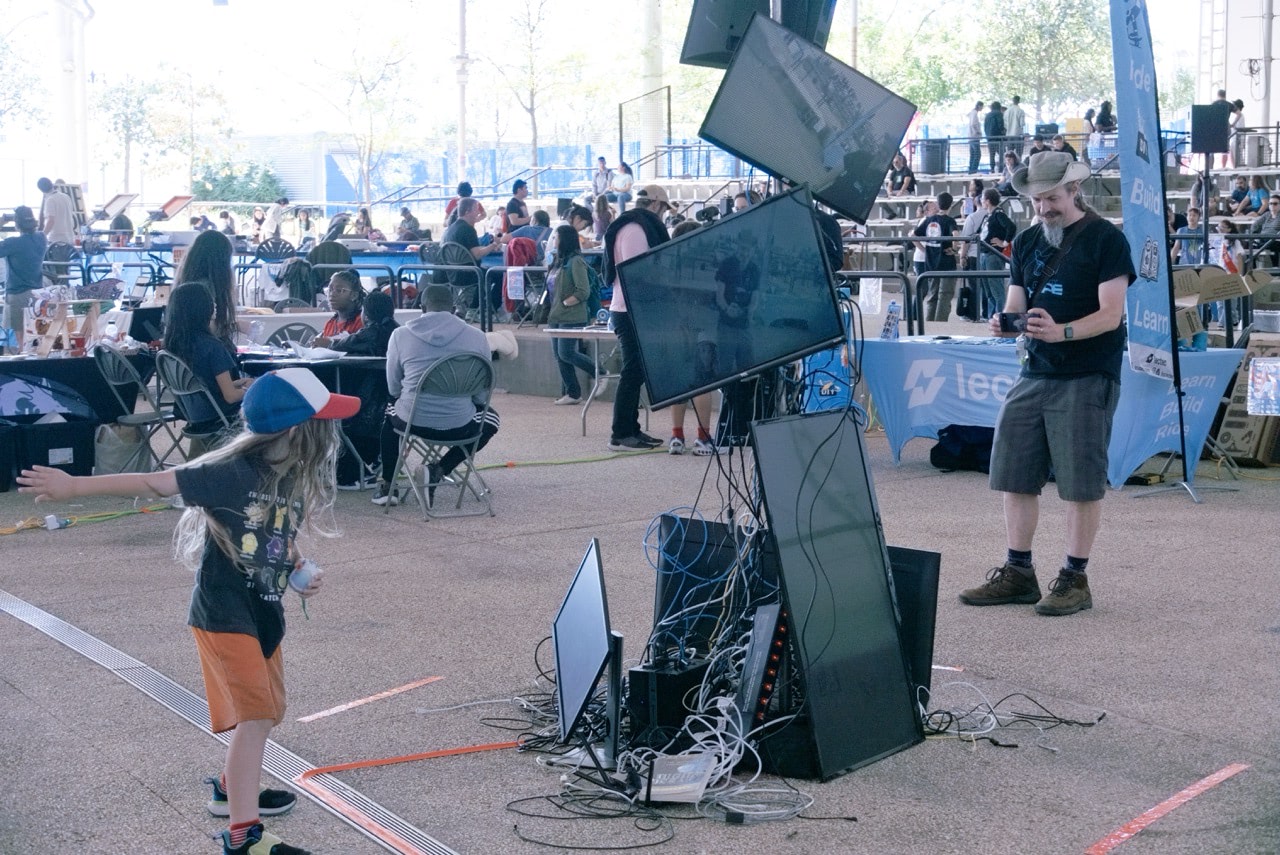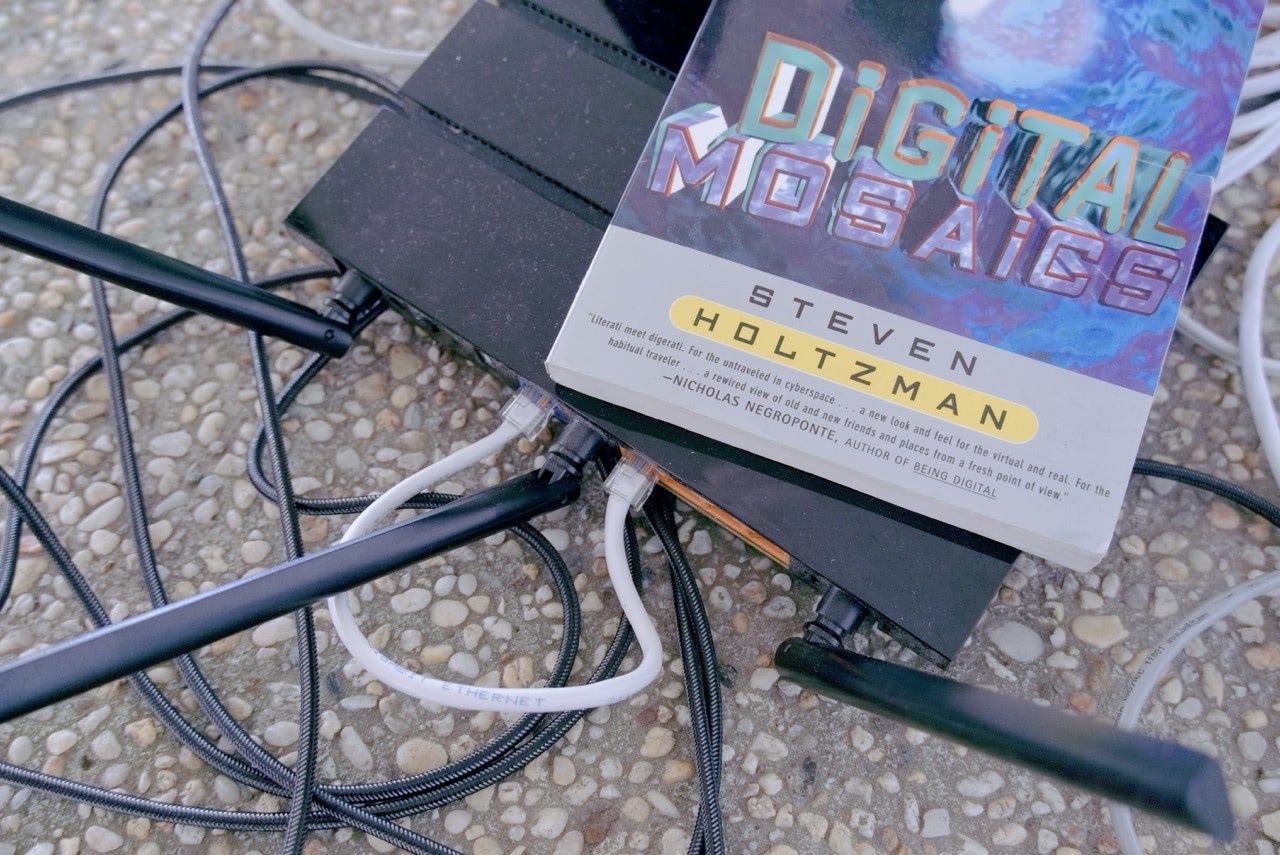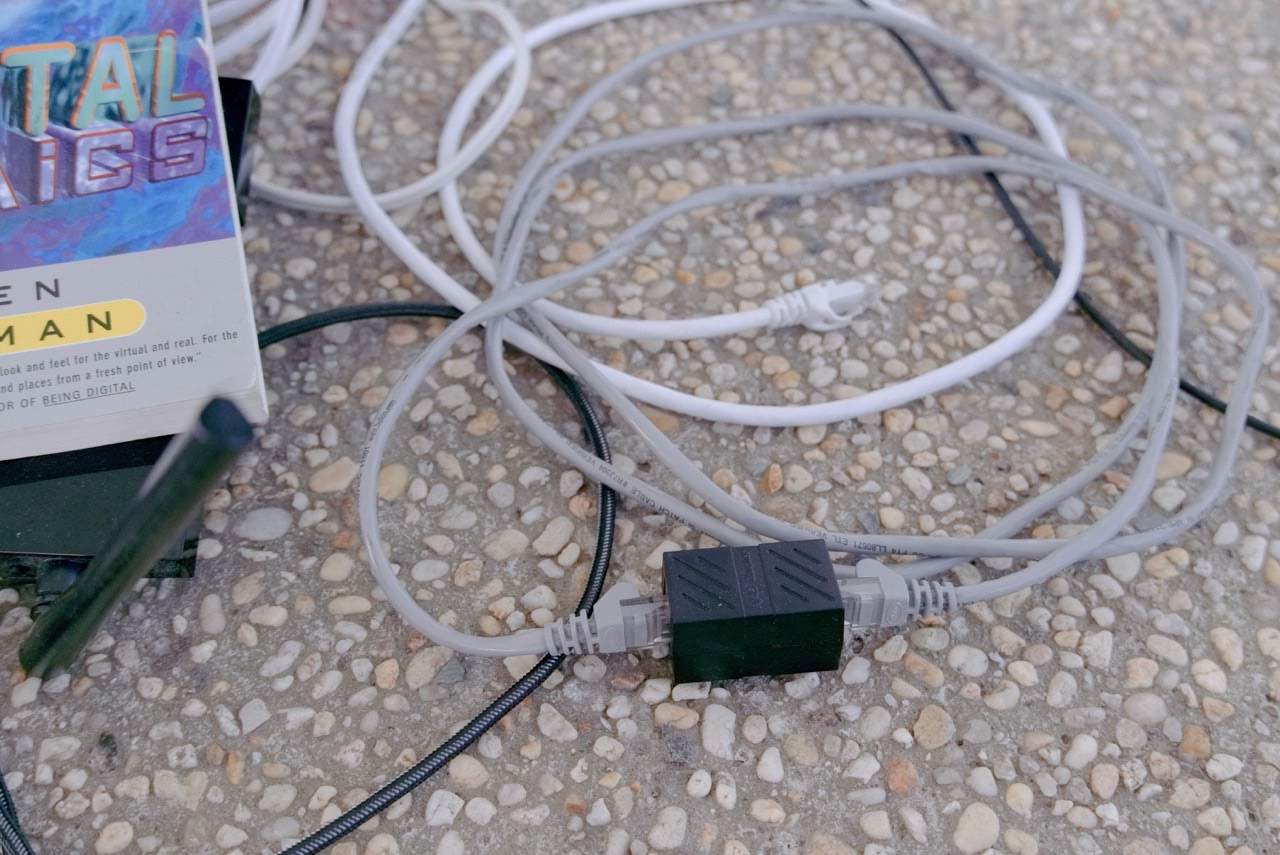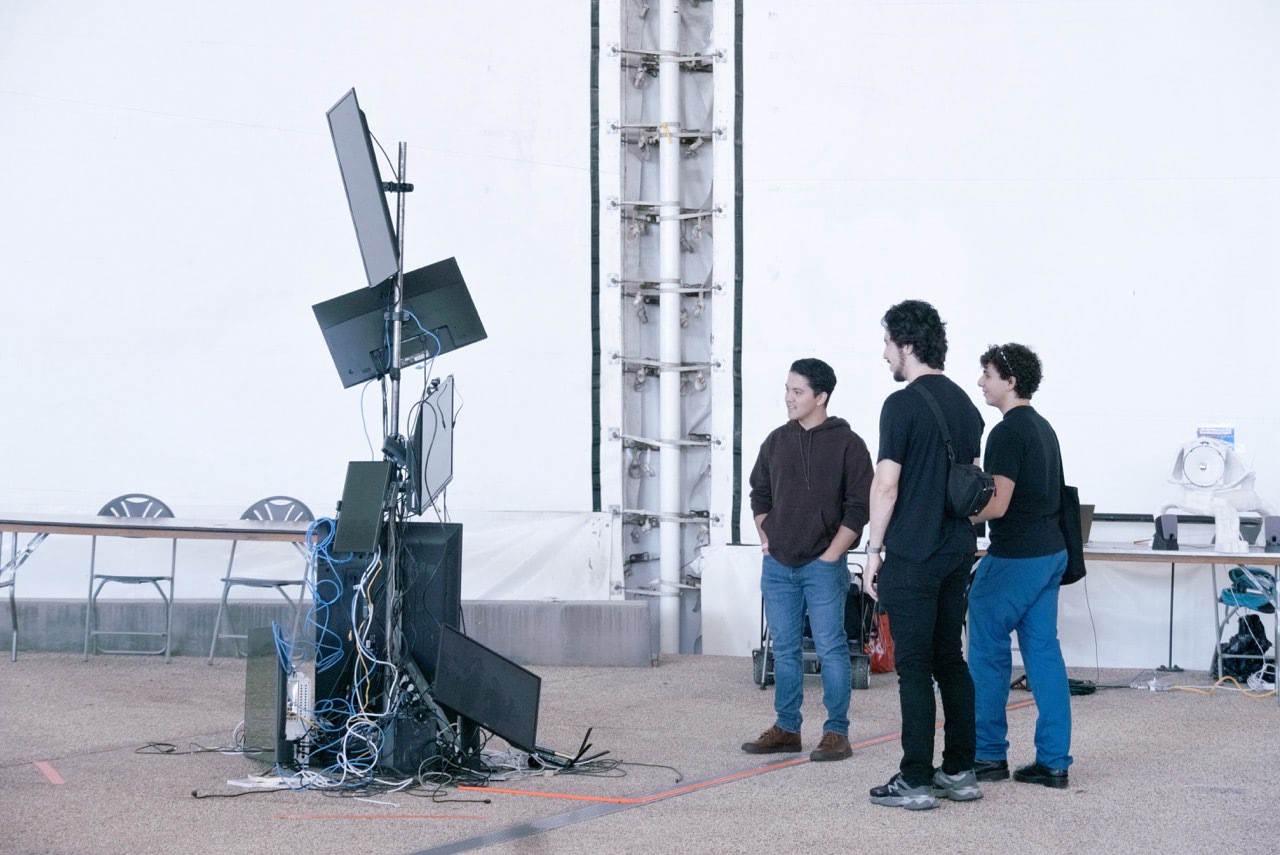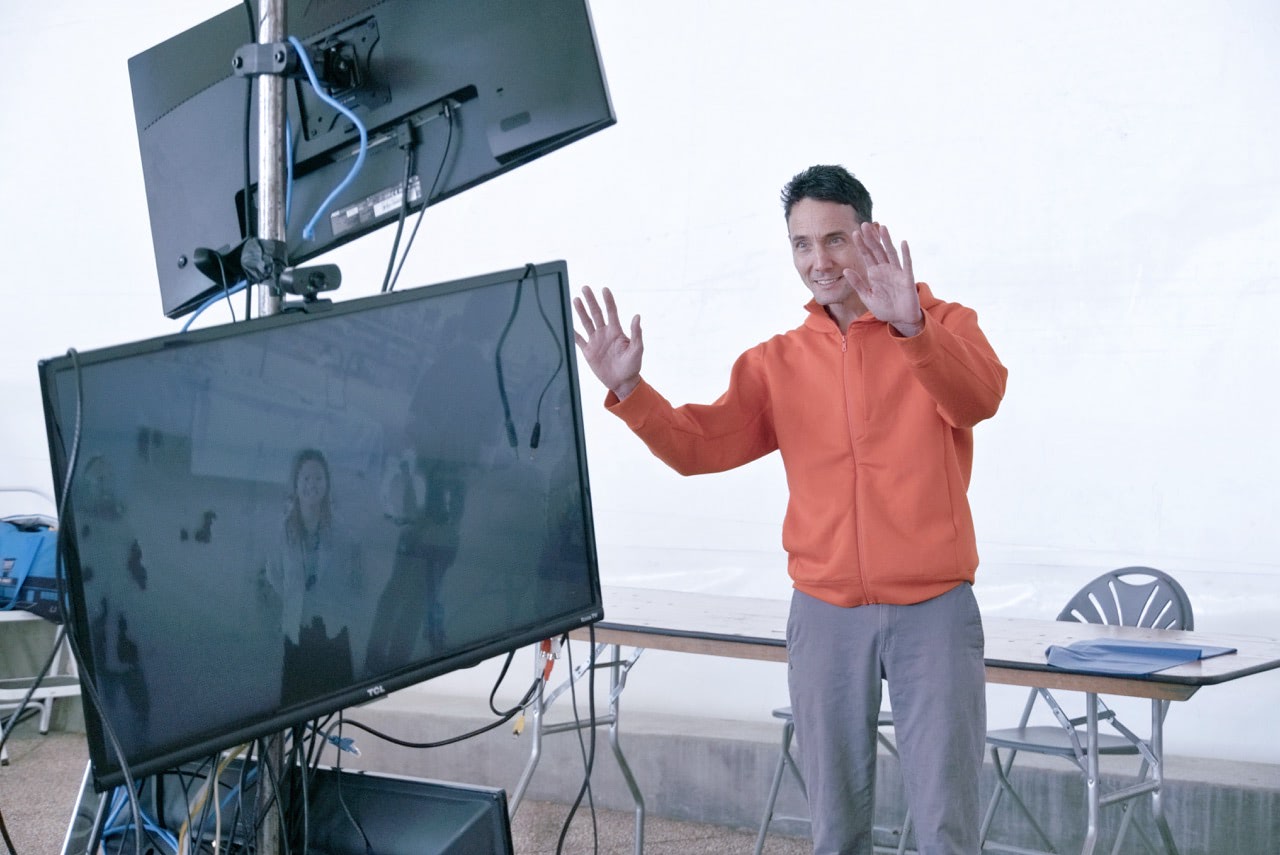M0SA1CS
(2024.10)Installation Dimension Variable
Interactive program runs on multiple screens and PCs
TouchDesigner
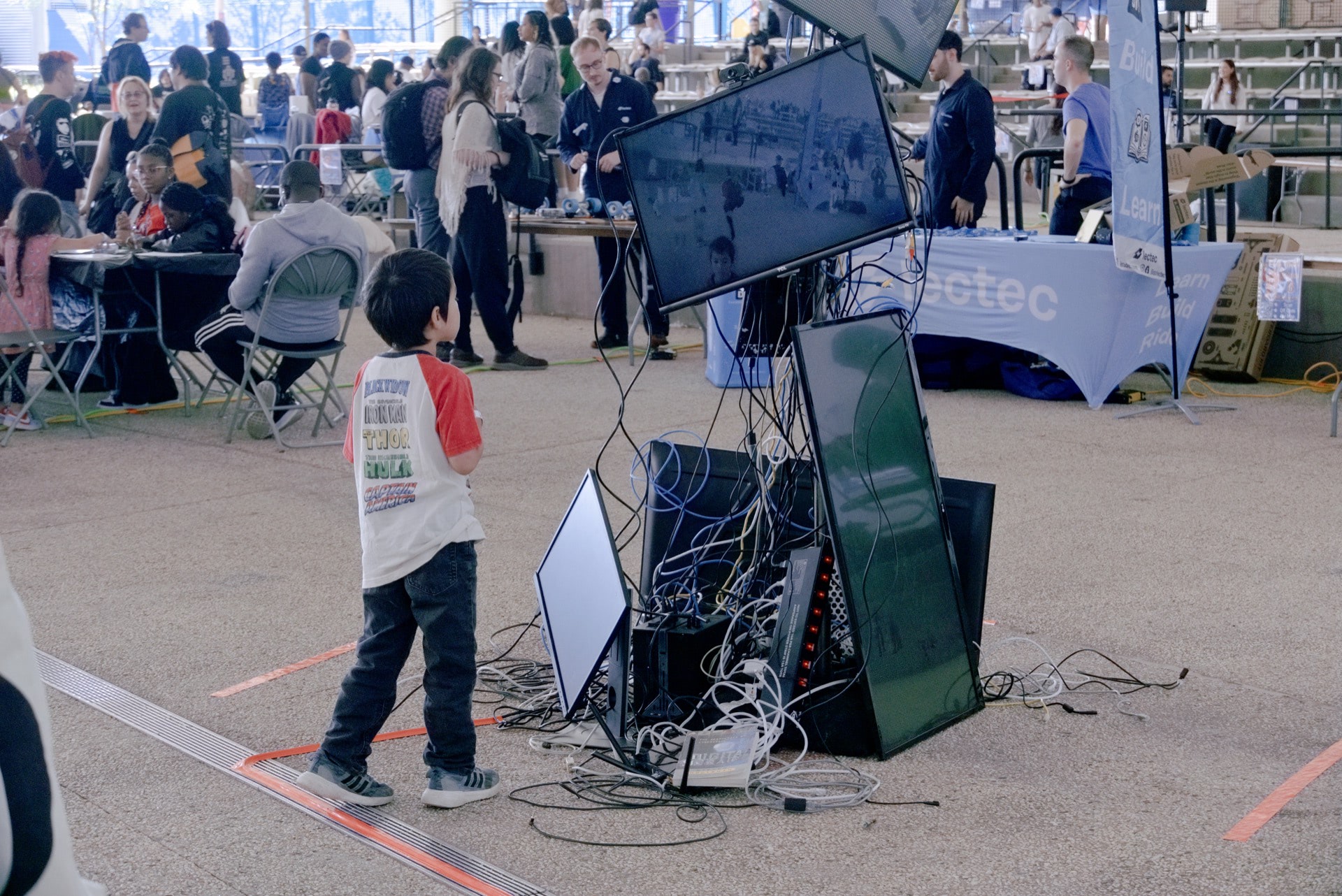
In this interactive installation, audiences see themselves and others in a mosaic of RGB pixels, placed in a mosaic-esque, warped time and space. It refers to and reflects on the perfect illusions of the digital world, under which images, spacetime, and even identity can be pixelated through the scope of digital technology.
The title "M0SA1CS" is self-referencing – it tries to create an illusion of the word, with a mosaic made from characters and binary digits – a digital mosaic of "mosaics."
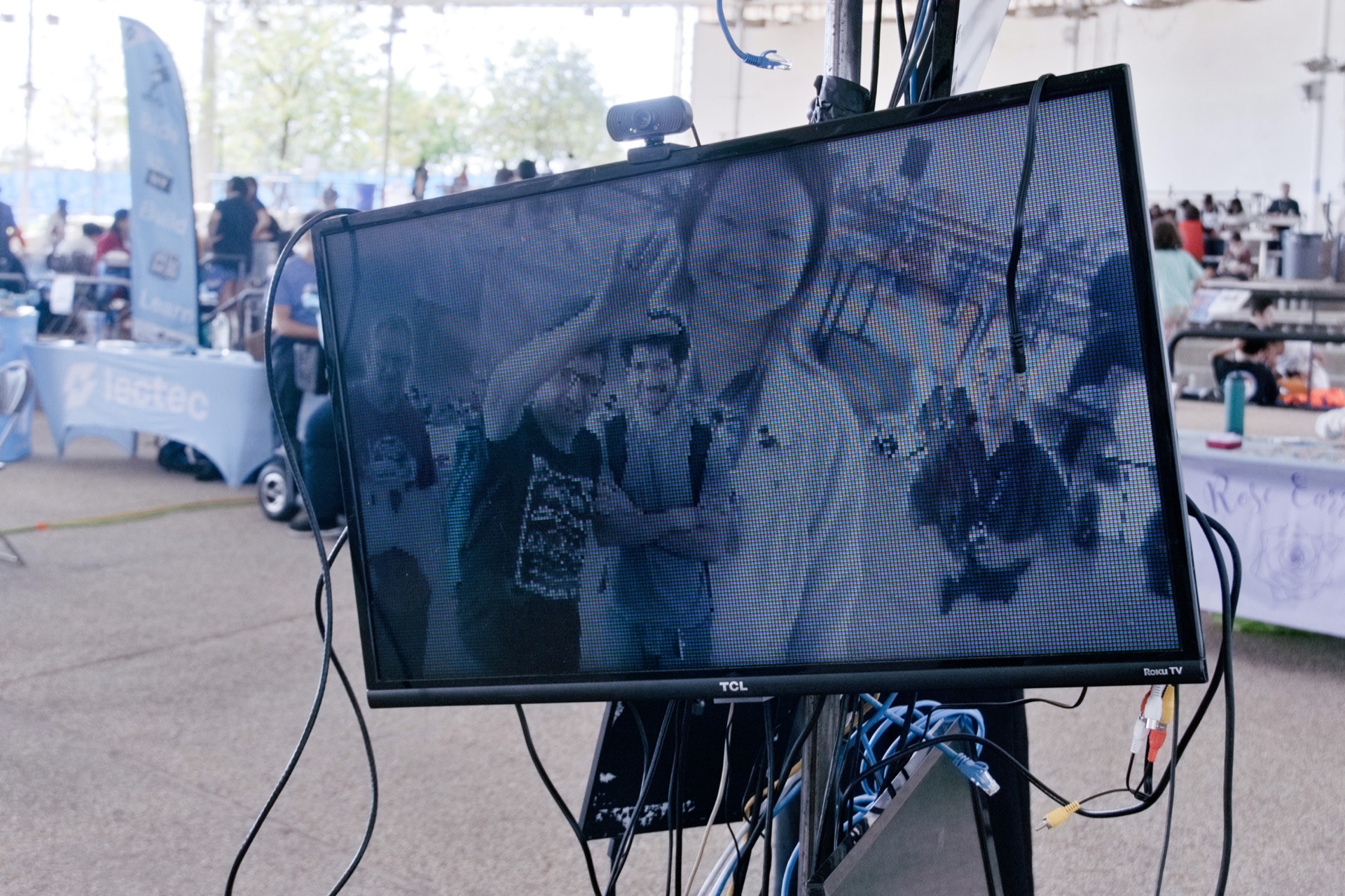
In the digital world, we count time in growing integers, we name places with internet domains, number them in IP addresses, and access them from interfaces with unique MAC addresses. These digits – in binary, decimal, or hexadecimal forms – all point to a series of time and place mapped to the physical world, but they only live in the structure of signs, symbols, and math.
Every place and time overlaps at nothing but a relation between digits. Time can be traced, recorded, and replayed. Place can be teleported, connected, or duplicated. If there is a map of the digital world, it would be a mosaic of spacetime.
Images in the digital world are produced, transmitted, if not, consumed in a pixelated form. These discrete points of data collage together as a microscopic mosaic of red, green, and blue dots, creating a perfect illusion for our eyes. If we see ourselves through the screens, aren’t we also turned into mosaics?
Open an app, a website, people are no longer recognized as individuals, but as samples in a huge data collection. Age, gender, occupation, hobby, all the searches, and browsing history, are turned into data points, analyzed, categorized, and to be predicted. How can we preserve a continuous self from a pixelated identity in the digital mosaics?
